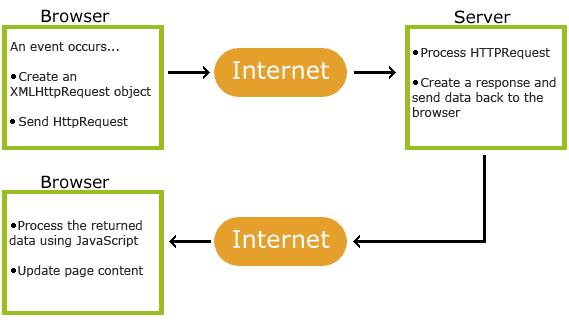CSS (Cascading Style Sheet).. Salah satu bahasa pemrograman web untuk mengendalikan beberapa komponen dalam sebuah web sehingga akan lebih terstruktur dan seragam. Teknik mengatur tata letak atau layout dari sebuah desain, tapi tidak menggunakan tabel yang dibuat dengan menggunakan bahasa HTML atau XHTML.
CSS dapat mengendalikan ukuran gambar, warna bagian tubuh pada teks, warna tabel, ukuran border, warna border, warna hyperlink, warna mouse over, spasi antar paragraf, spasi antar teks, margin kiri, kanan, atas, bawah, dan parameter lainnya.
Teknik Penulisan CSS
Saat masuk pada bagian CSS, sering dijumpai kode sebagai berikut:
h1 {
color: #0789de;
}
Bagian pertama sebelum tanda ‘{}’ dinamakan selector, sedangkan yang diapit oleh ‘{}’ disebut declaration yang terdiri dari dua unsur, yaitu property dan value. Selector dalam pernyataan di atas adalah h1, sedangkan color adalah property, dan #0789de adalah value.
Selain itu ada tiga metode penulisan CSS atribut, yaitu :
Inline Style Sheet
CSS didefinisikan langsung pada tag HTML yang bersangkutan. Cara penulisannya cukup dengan menambahkan atribut style=”…” dalam tag HTML tersebut. Style hanya akan berlaku pada tag yang bersangkutan, dan tidak akan mempengaruhi tag HTML yang lain.
Contoh penulisan CSS dengan metode Inline Style Sheet :
<html>
<head>
<title>Contoh Bentuk Inline</title>
</head>
<body bgcolor=”#FFFFFF”>
<p id=”cth1″>
Ini adalah contoh tag P tanpadiformat menggunakan CSS </p>
<p id=”cth2″ style=”font-size:20pt”>
Tag P ini diformat dengan besar font 20 point </p>
<p id=”cth3″ style=”font-size:14pt; color:red”>
Tag P ini diformat dengan besar font 14 point, dan menggunakan warna merah </p>
</body>
</html>
Embedded Style Sheet
CSS didefinisikan terlebih dahulu dalam tag <style> … </style> di atas tag <body>. Pada pendefinisian ini disebutkan atribut-atribut CSS yang akan digunakan untuk tag-tag HTML, yang selanjutnya dapat digunakan oleh tag HTML yang bersangkutan.
Contoh penggunaan CSS dengan metode Embedded Style Sheet :
<html>
<head>
<title>Contoh Bentuk Embedded/title>
</head>
<style>
body {background:#0000FF; color:#FFFF00; margin-left:0.5in}
h1 {font-size:18pt; color:#FF0000}
p {font-size:12pt; font-family:arial; text-indent:0.5in}
</style>
<body>
<h1 id=”cth1″>Judul ini berukuran 18 dengan warna merah!</h1>
<p id=”cth2″>Tag p ini di format dengan besar font 12 point dengan tipe font Arial dan mempunyai identasi 0.5 inch </p>
<p id=”cth3″>Yang perlu diperhatikan juga bahwa body disini telah diformat dengan margin kiri 0.5 inch dan warna background biru</p>
</body>
</html>
Linked Style Sheet
Metode ini hampir sama dengan metode Embedded Style Sheet, hanya saja pendefinisian tag <style> … </style> dibuat pada berkas terpisah dari berkas HTML yang membutuhkan CSS. Kemudian berkas lain tersebut disimpan dalam format .css.
Pada berkas HTML yang akan menggunakan berkas CSS, harus dibuat tag <link> yang dituliskan di antara tag <head> … </head>.
Contoh (simpan dengan nama contoh.css) :
<style>
body {background:#0000FF; color:#FFFF00; margin-left:0.5in}
h1 {font-size:18pt; color:#FF0000}
p {font-size:12pt; font-family:arial; text-indent:0.5in}
</style>
Fakta Menggunakan CSS diantaranya :
- Telah didukung oleh kebanyakan browser versi terbaru, tetapi tidak didukung oleh browser-browser lama.
- Lebih fleksibel dalam penempatan posisi layout. Dalam layouting CSS, kita mengenal Z-Index untuk menempatkan objek dalam posisi yang sama.
- Menjaga HTML dalam penggunaan tag yang minimal, hal ini berpengaruh terhadap ukuran berkas dan kecepatan pengunduhan.
- Dapat menampilkan konten utama terlebih dahulu, sementara gambar dapat ditampilkan sesudahnya.
- Penerjemahan CSS setiap browser berbeda, tata letak akan berubah jika dilihat di berbagai browser
- CSS adalah layouting “Masa Depan” dengan penggabungan bersama XHTML.





